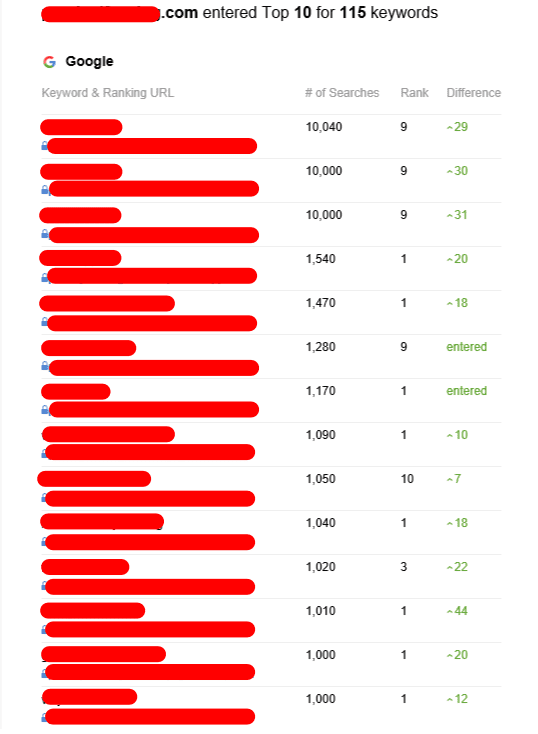Tiered Link Building - How to Avoid a Google Penalty
Tiered link building is an effective tool that can help websites improve their ranking on search engines. However it should be used in a manner that is safe. Otherwise it could result in a Google penalty.
Tiered link construction involves the use of multiple levels of backlinks to increase the rank of a web page. This strategy is utilized by a variety of SEO experts and link building agencies.
First-tier links
Tiered link building is an effective SEO technique that can boost your search engine ranking. However, it's essential to understand how to use tiered links effectively to avoid penalties from Google. You can achieve this by using the tiers of your backlink pyramid. You can also use other SEO techniques, like breaking links and niche editing building.
In a tiered method, the first tier should consist of links from top-quality websites with a higher PageRank and domain authority than your own. This gives you the highest chance of ranking over the long term. Links from poor quality websites can hurt your rankings and raise red flags. Avoid linking to sites that are unrelated or contain only hyperlinks.
Another way to build your first level is by using forum comments and wikis with lots of user-generated content. This is an excellent method to obtain high-quality links that are relevant and contextual. It is important to be aware that these links might not have the same amount of link juice.
You can also utilize an online resource such as HARO to find a list of subjects that journalists are seeking information on. This is a great way to build your first tier of links in a natural manner without breaking any rules. Make tier 2 backlinks that you only link to websites that are reputable and relevant to your industry.
Second-tier links
SEO agencies and site owners employ tier link building to boost their search engine rankings. However, it's an extremely risky approach that could lead to Google penalties. Tiered links are backlinks from third-party websites that provide authority to your site. These backlinks can be used to pass the value of your links to your primary web pages to help them rank higher in SERPs. However, this strategy can be time consuming and costly. In addition, it may be difficult to get to a tipping point in the search engine rankings.
Tier two links are generally lower-quality than those in the first however they can be helpful to increase domain authority and organic rank. Moreover, they can even help make Tier 1 backlinks more effective by enhancing their value. Tier 2 backlinks can be either dofollow or nofollow. However, dofollow is the most important.
There are a variety of ways to build Tier 2 backlinks, including guest posts and citations to niche-based articles. You can also create these links through link roundups or directories of articles. Whatever method you decide to use, it is essential to ensure that the referring URLs are relevant to your context. It is also important to avoid low-quality links as they can be interpreted by Google as spam. These techniques could quickly transform into a black-hat technique that will be penalized.
Third-tier links
Link building in a tier system is an effective SEO tool that can assist in helping rank websites in results pages of search engines. It can be dangerous, however, if it is performed incorrectly. If Google discovers that you are using tiered links, it could penalize your website or remove it entirely from the search engine. There are ways to avoid such a fate.
In the third tier, things can get somewhat messy. Here, marketers utilize third-party tools to build backlinks that are large. This can include blog comments directories of poor quality websites, bookmark sites, wikis, and other user-generated content. These backlinks are meant to boost the PageRank and authority of your first-tier link.
They can be traced back to their original source and are a bit more risky than organic ones. Furthermore, they're not as efficient in increasing PageRank. Google's algorithm has evolved and low-quality (even nofollow) hyperlinks are losing value.
To prevent these issues marketers must be cautious when creating their third-party backlinks. They should only use reputable third-party providers that have excellent track history. They should also stay clear of using any automated tools since they can cause problems. If Google detects an automated process, it may issue a manual penalty which can drastically decrease your ranking. It's important to choose an SEO agency that has experience in tiered link development.
Fourth-tier links
Tiered link building is a technique that involves creating a pyramid of links. This method allows websites with more authority, which are more authoritative to transfer link juice to less authoritative sites that can then rank for certain keywords. This method can be very effective in improving website traffic and ranking over time. However it is crucial to remember that it can be risky to use tiered hyperlinks for your entire website or one web page.

The best way to avoid this is to make sure that your tier-2 links come from different sources. Google may penalize your website when your tier-2 hyperlinks are all from the same source. It is also essential to avoid linking to sites that are spammy since this could harm the reputation of your website.
Tier 2 links can also be accessed through paid advertising and by submitting content of high-quality to credible websites. Another alternative is to submit an article to HARO (Help a Reporter Out). This service sends emails to journalists about a range of topics. You can provide the information they require to write their articles.
This approach to building links is not a strategy that will last. Google's algorithms are constantly updated, and it is becoming increasingly difficult to make links from poor quality sources. Google is also more adept at detecting automated links. Therefore, it is likely that tiered linking will disappear eventually.
